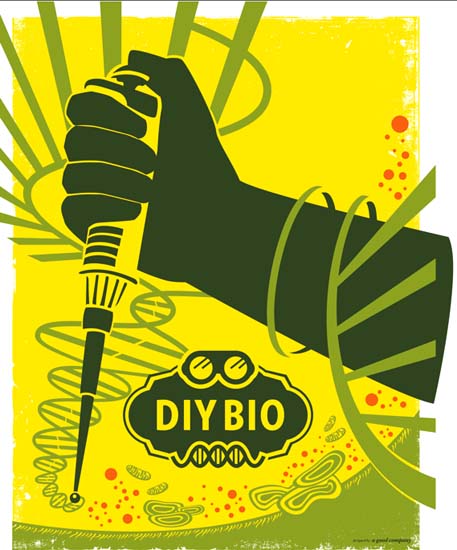Bridging the divide between North and South Campus is a collaboration rarely seen in the halls of UCLA.
But, students featured in the Bio/Nano exhibit hope to change this. Students from UCLA’s biotechnology and art honors classes will present their work alongside Parsons The New School for Design in New York City that blends elements of art and science.
The exhibition, which runs through June 7, at the California NanoSystems Institute Art | Sci Gallery and Lab, uses science and art to respond to environmental issues, food consumption and animal breeding through a collection of collaborative art and performance installations.
The exhibit will present the student’s final project proposals that blend art and biology.
The show is largely influenced by the work of Siddharth Ramakrishnan, a postdoctoral researcher in bioelectronics at Columbia University.
Ramakrishnan and Design | Media Arts Professor Victoria Vesna co-teach a class on nanotechnology, biotechnology and art. The themes of the class partly inspired the exhibition, as it exemplifies the correlations and connections between science and art.
“The goal of the exhibition is to blend these two separate fields to prove that they are not completely different worlds,” Ramakrishnan said.
The exhibit opened on May 14, with the North | South Social Mixer, a quarterly open house bringing students in the fields of both art and science together to discuss and present the work they’ve created that displays innovative scientific concepts.
According to Ramakrishnan, the exhibit features one project which deals with designing insulin pumps as fashion accessories for those with diabetes.
“(The insulin pump designs) transform something that is ugly into something much more artistic and more of something that you own,” Ramakrishnan said.
Using art as a medium to explain scientific concepts makes scientific discoveries more accessible for everybody, rather than appearing overwhelming and incomprehensible.
At the exhibit, each project presented will creatively describe a scientific concept, whether it is exploring insulin pumps or virtual brain technology.
“(Virtual brain technology) deals with the brain in a virtual world, and how you use it to control and navigate the world,” Ramakrishnan said.
Featured students expressed how they attempted to connect science and art through their pieces.
“It’s basically bringing more advanced sciences to anyone outside of the industry and university to empower them to do personal things and also just play,” said Romie Littrell, a second-year bioengineering doctoral student.
Littrell’s presentation is a demo and will illustrate the possibility of showing people how to extract their own DNA.
“People can see how that DNA can do a lot of interesting things,” Littrell said, “I want to inspire and encourage people who are outside the sciences that a lot of these really cool and powerful tools and techniques are not something out of people’s reach.”
Caroline Romedenne, a design and technology graduate student at Parsons The New School for Design, explained her project as being something she and other students collaborated on and completed for their final exam in Vesna’s class.
Similar to Littrell’s presentation at the exhibit, Romedenne’s is a poster which presents the idea for what the project will develop into after it’s complete.
“The combination of art and science is hugely important because art and design can explain things in a different way, … helping to visualize and understand concepts better and also to question differently ““ it brings new questions,” Romedenne said.
Ramakrishnan predicted the exhibition will use the diversity of UCLA students’ interests to its advantage.
“UCLA is one of those places where you have so many different people from different views, and I think this is an opportunity for them to come and talk about stuff,” Ramakrishnan said.
“Especially for those not engaged in science and art, their perspective is going to be so new, and it’s really going to be interesting to hear what they say about it.”
